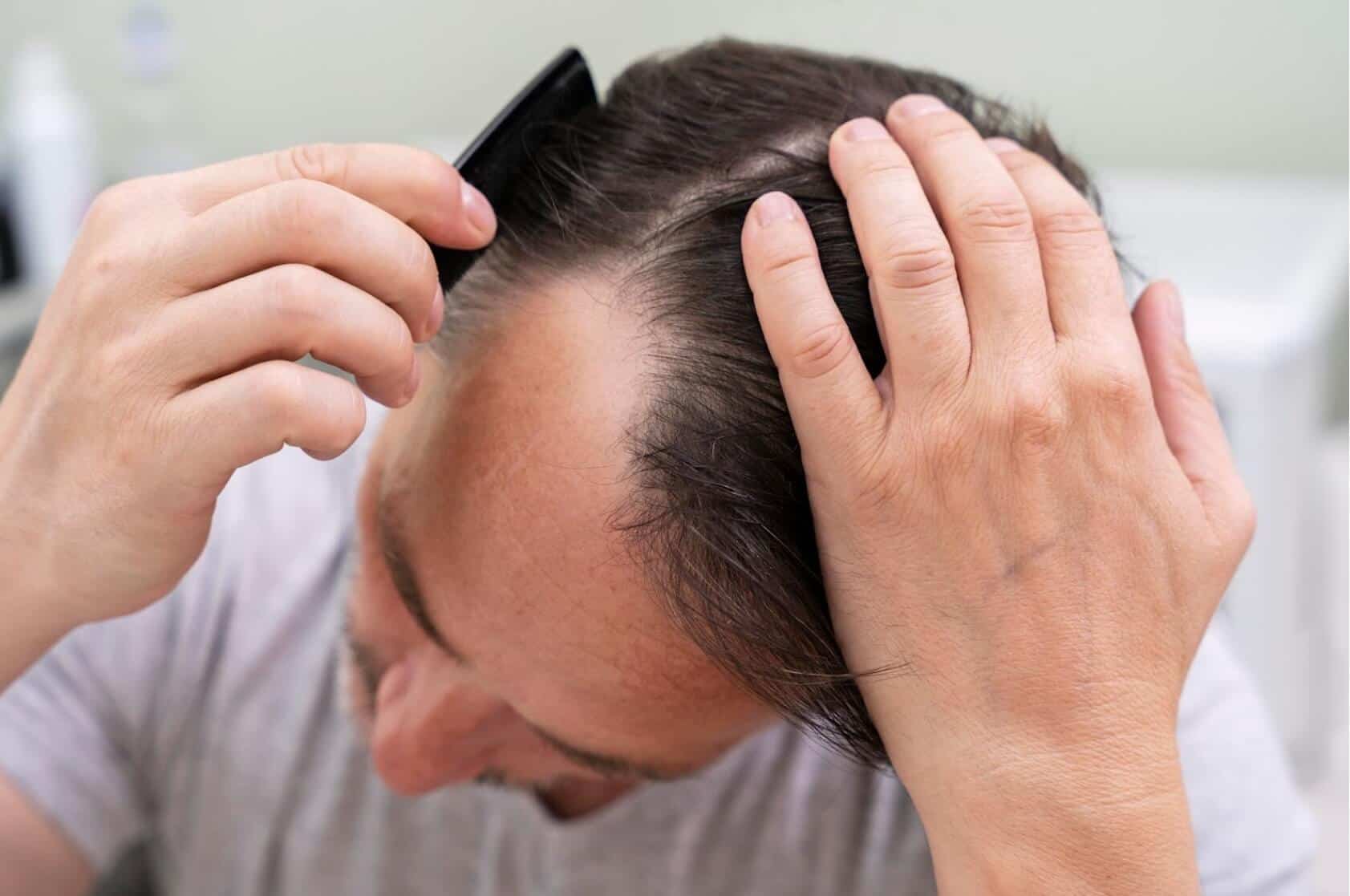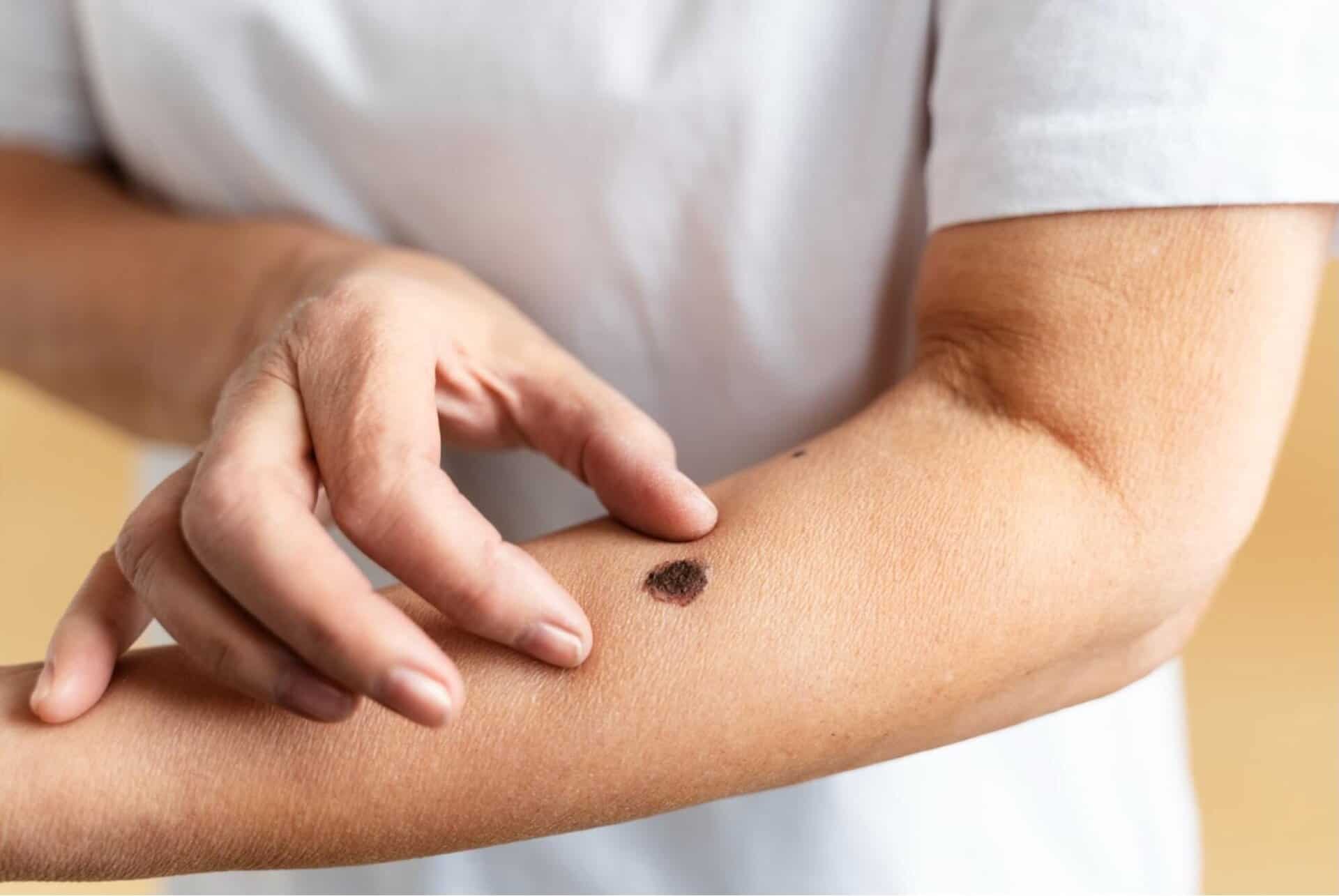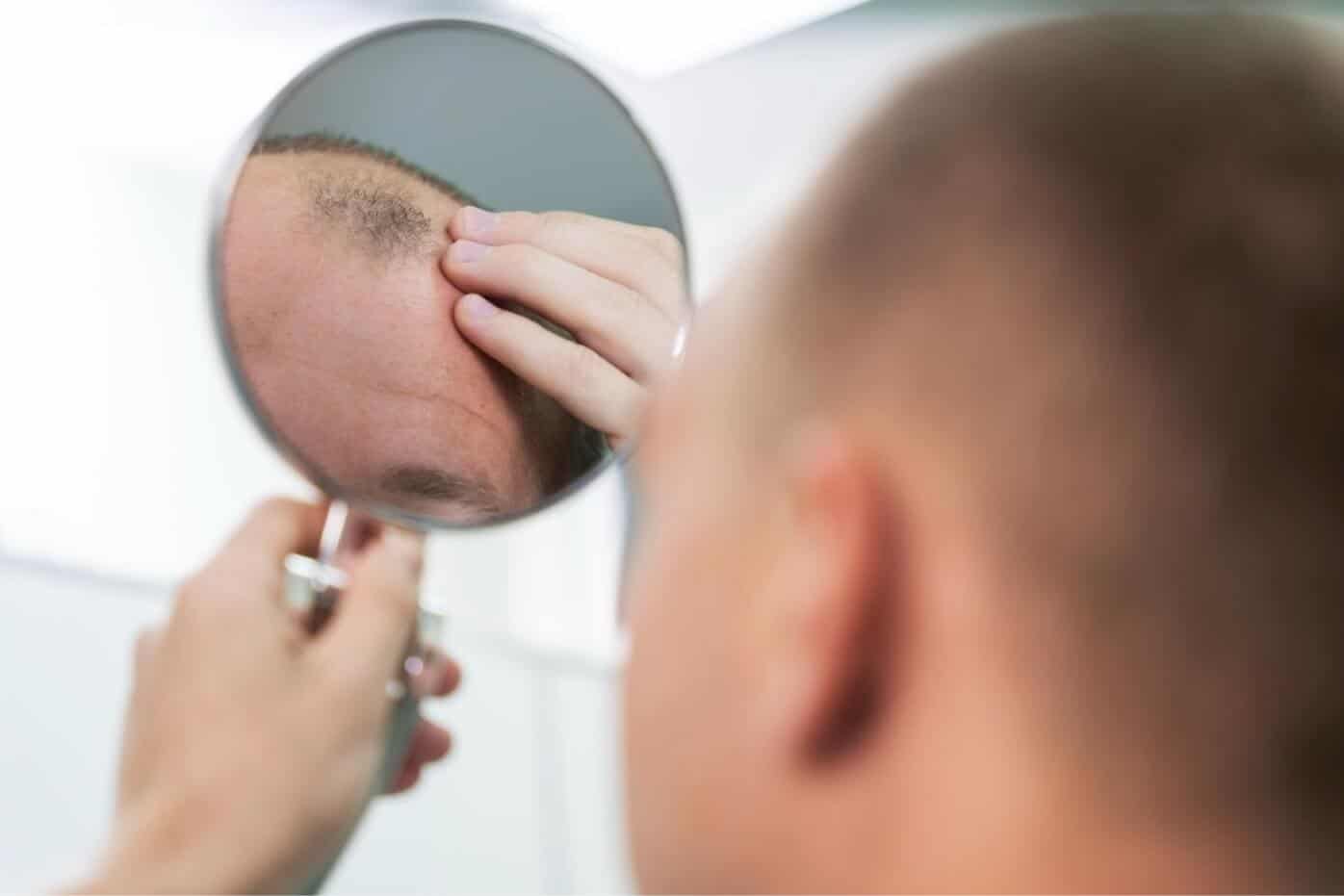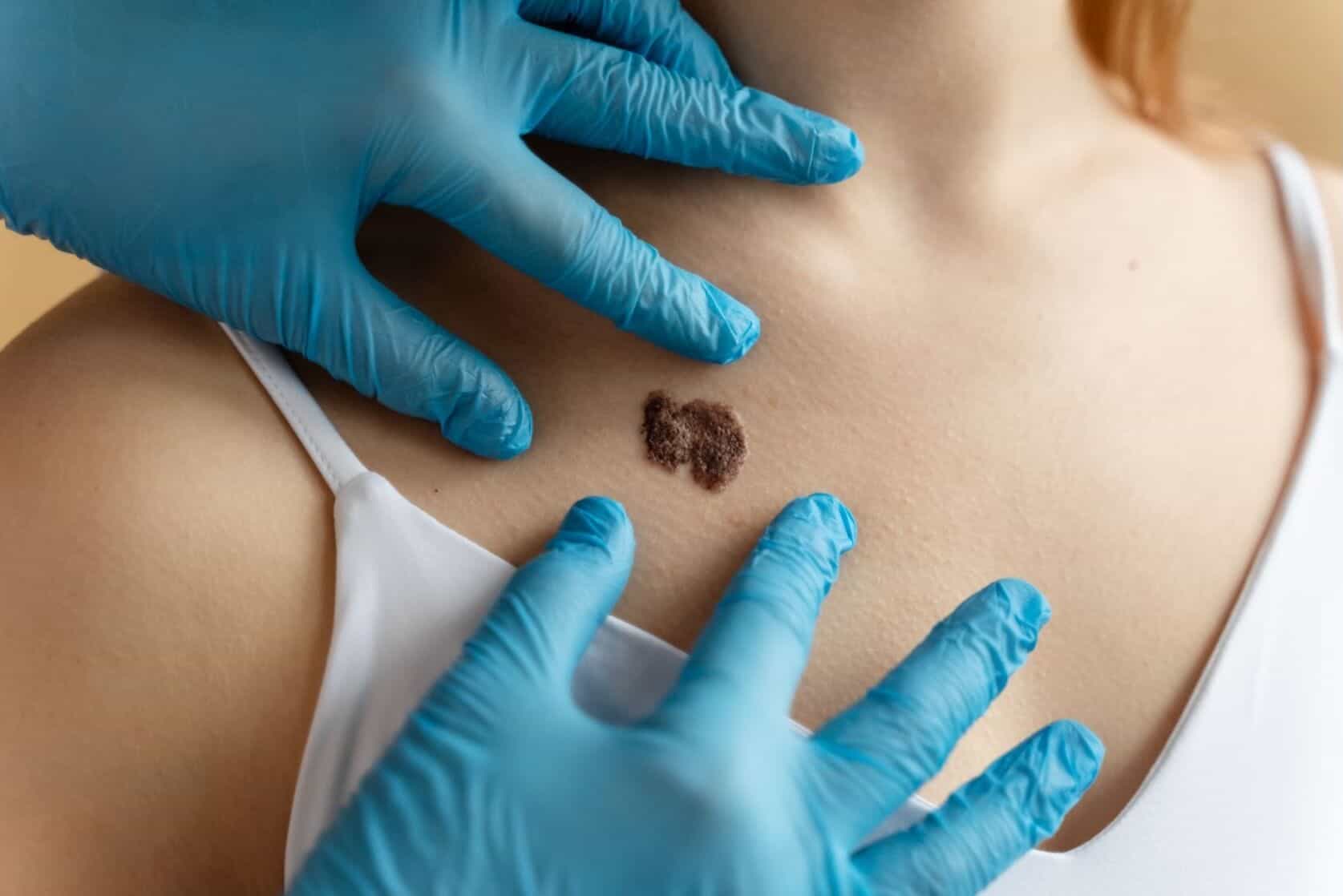- Dr Sharon Crichlow
- Reading Time: 10 Mins
Neck skin tags frustrate many people, these small growths not only affect appearance but often catch on necklaces, collars, and clothing. While rarely dangerous, they prompt countless doctor visits and internet searches for removal solutions.
This practical guide covers what causes them, safe removal options, and clear signs that indicate when it’s time to consult a medical professional. With the right information, you can make confident decisions about your skin health.
Key Takeaways
- Neck skin tags affect 50-60% of adults and are primarily caused by friction, genetics, and metabolic factors like diabetes and obesity.
- Professional removal methods (cryotherapy, excision, electrocautery) are safer than DIY approaches, which risk infection and scarring.
- Consult a doctor if skin tags change appearance, bleed, cause pain, or appear suddenly in clusters, as they may signal underlying health conditions.
Table of Contents
What Are Skin Tags?
Skin tags, medically known as acrochordons, are small, flesh-coloured or slightly darker growths that hang from the skin’s surface. These soft, flexible skin protrusions consist of collagen fibres and blood vessels covered by skin.
Research indicates that skin tags occur in 50-60% of adults, with the neck being one of the most common sites, alongside armpits and eyelids. They can range from 1mm to several centimetres in size and may appear as singular growths or in clusters.
Unlike warts or moles, skin tags have a characteristic pedunculated appearance, meaning they connect to the skin by a thin stalk. This stalk, or peduncle, gives them their distinctive tag-like appearance.
Why Skin Tags Form on the Neck
The neck represents a prime location for skin tags due to several factors that contribute to their development:
Friction Areas
The primary cause of neck skin tags is friction. Areas where skin rubs against skin or clothing create ideal conditions for these growths.
Your neck experiences constant movement throughout the day, creating friction against collars, jewellery, and even facial hair. This persistent rubbing can stimulate abnormal skin cell growth over time.
Metabolic Factors
Scientific research has revealed compelling connections between skin tags and metabolic health. A study found that patients with skin tags were 11 times more likely to have metabolic syndrome than those without.
Among adults with obesity, those with neck skin tags showed higher systolic blood pressure and elevated blood glucose levels. In fact, a 2020 Irish bariatric centre study reported that 94.6% of patients with diabetes presented with skin tags compared to 79.4% of non-diabetics.
| Condition | Association with Skin Tags | Key Finding |
|---|---|---|
| Metabolic Syndrome | Strong (11× higher risk) | Linked to increased waist circumference and low HDL cholesterol |
| Diabetes | Strong | 94.6% of diabetics vs 79.4% of non-diabetics present with skin tags |
| Obesity | Strong | Increased skin folds lead to friction and tag formation |
Genetic Predisposition
Family history plays a significant role in skin tag development. If your parents or siblings develop skin tags, you’re more likely to experience them as well.
Hormonal Influences
Hormonal fluctuations during pregnancy or due to conditions like polycystic ovary syndrome can trigger skin tag growth. Elevated insulin and growth hormone levels particularly affect skin cell proliferation.
Possible HPV Connection
Some research suggests a potential link between human papillomavirus (HPV) and skin tags. Studies have found HPV DNA in up to 88% of biopsied skin tags, though this connection remains under investigation.
When Skin Tags Are Harmless vs Problematic
Most neck skin tags are completely harmless. They don’t typically cause pain unless irritated by clothing, jewellery, or shaving.
Normal skin tags maintain a consistent appearance over time. They’re usually flesh-coloured or slightly darker, soft to the touch, and don’t bleed or ooze.
You should monitor your skin tags for concerning changes that might indicate a different condition:
| Normal Skin Tag Signs | Warning Signs |
|---|---|
| Consistent colour (flesh-toned to brown) | Changing colour (especially darkening) |
| Soft, movable texture | Hardening or becoming firm |
| Slow growth or stable size | Rapid growth or irregular shape |
| No pain (unless irritated) | Persistent pain or discomfort |
| No bleeding | Spontaneous bleeding |
Importantly, clusters of skin tags may signal underlying health issues. Research has linked multiple skin tags to insulin resistance, diabetes, and metabolic syndrome, suggesting they may serve as visual markers for these conditions.
Safe Removal Options
Professional medical removal offers the safest, most effective approach to eliminating neck skin tags:
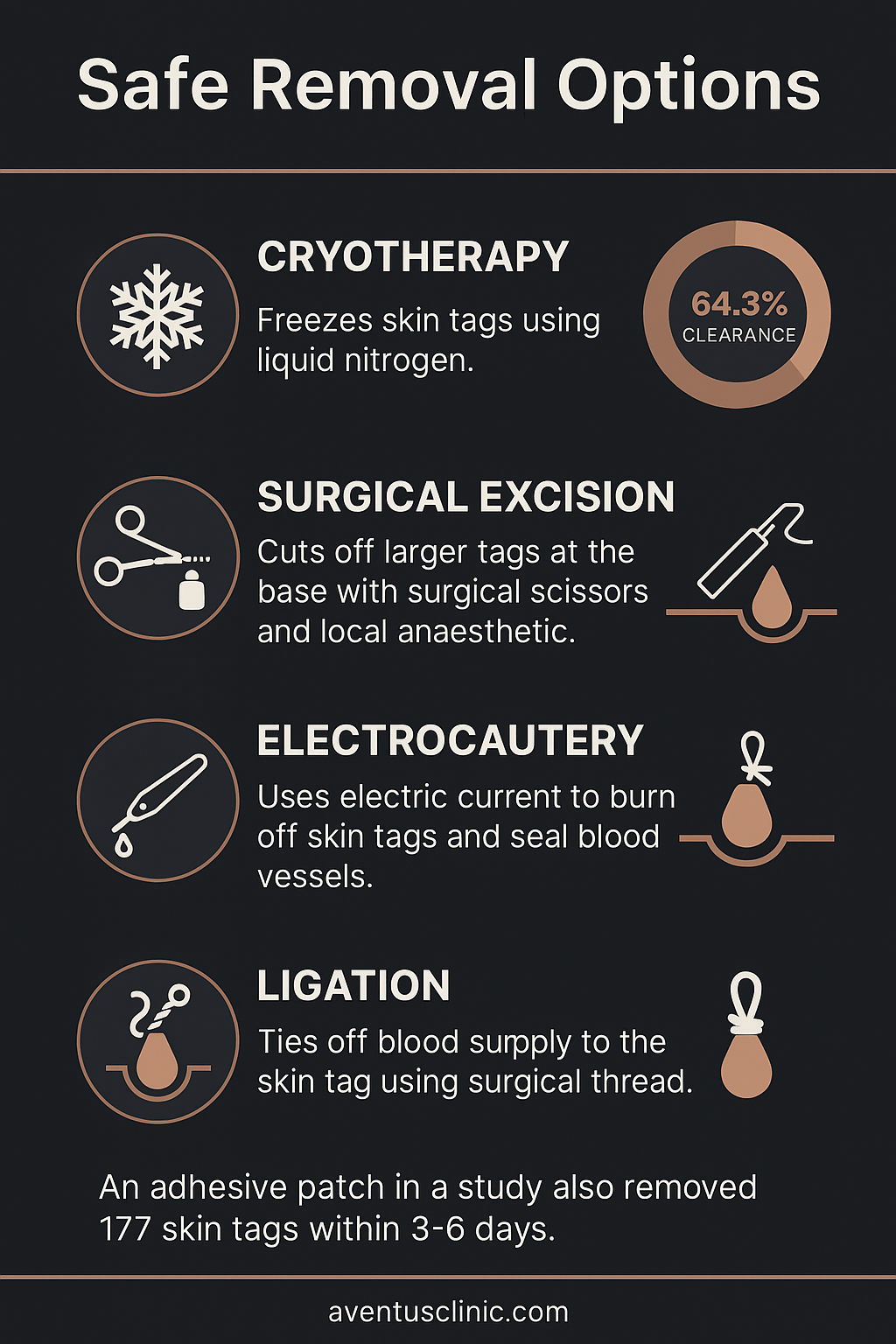
Cryotherapy
This technique freezes the skin tag using liquid nitrogen. Clinical studies show impressive results, with one 2021 European trial of the Pixie® cryogenic device demonstrating a 64.3% clearance rate for skin tags on the neck and other areas.
The procedure takes minutes, with the skin tag typically falling off within days or weeks.
Surgical Excision
For larger tags, doctors may use sterile surgical scissors to snip the growth at its base after applying local anaesthetic. This provides immediate results with minimal discomfort.
Electrocautery
This method uses an electric current to burn and remove the skin tag. It simultaneously seals blood vessels, reducing bleeding risk.
Ligation
By tying off the skin tag’s base with surgical thread, doctors cut off its blood supply, causing it to shrink and fall off naturally.
A study showed that an adhesive patch device effectively removed 177 skin tags within 3-6 days by applying consistent pressure to the base.
Risks of DIY Removal
Despite numerous online remedies suggesting home removal methods, attempting to remove neck skin tags yourself poses significant risks.
Infection can occur when using non-sterile tools or techniques, potentially leading to more serious complications.
Improper removal often results in scarring, which may be more noticeable than the original skin tag.
Harvard Health analysis confirms that home remedies like tea tree oil and apple cider vinegar lack scientific evidence for effectiveness and may cause skin irritation or chemical burns.
Additionally, without medical training, you might misidentify a more serious skin condition as a simple skin tag, delaying proper treatment.
When to See a Doctor
Consult a medical professional about your neck skin tags if:
- They change in size, shape, or colour
- They bleed, itch, or cause pain
- You have numerous skin tags appearing suddenly
- The skin tag becomes twisted or irritated
- You’re unsure if the growth is actually a skin tag
Our skin tag removal specialists in Hertfordshire provide expert assessment and treatment options tailored to your specific needs.
Regular skin checks help identify potential concerns early. Remember that sudden proliferation of skin tags may warrant metabolic health screening, as research consistently links them with conditions like insulin resistance.
Conclusion
Skin tags on the neck are common, typically harmless growths caused by friction, genetics, hormonal changes, and metabolic factors. While they don’t usually require treatment, various professional removal options exist for those experiencing discomfort or cosmetic concerns.
If you’re concerned about skin tags or interested in removal, we invite you to book a free online assessment with our expert dermatologists. We provide personalised treatment plans using the latest techniques to ensure safe, effective skin tag removal with optimal aesthetic results.
Frequently Asked Questions
Can skin tags come back after removal?
While professional removal eliminates the specific skin tag, new ones may develop in the same area if contributing factors like friction or hormonal issues persist.
Are skin tags contagious?
No, skin tags are not contagious. They cannot spread from person to person through contact.
Can weight loss reduce skin tags?
Weight loss may reduce new skin tag formation by decreasing skin fold friction and potentially improving metabolic factors. However, existing skin tags won't disappear with weight loss alone.
Are skin tags linked to any medical conditions beyond those mentioned?
Besides metabolic syndrome and diabetes, research has identified associations between skin tags and conditions like acromegaly, Birt-Hogg-Dubé syndrome, and intestinal polyps in certain cases.
Does insurance cover skin tag removal?
Most insurance companies consider skin tag removal cosmetic unless the tags cause pain, bleeding, or other medical issues. Check your specific policy for coverage details.





